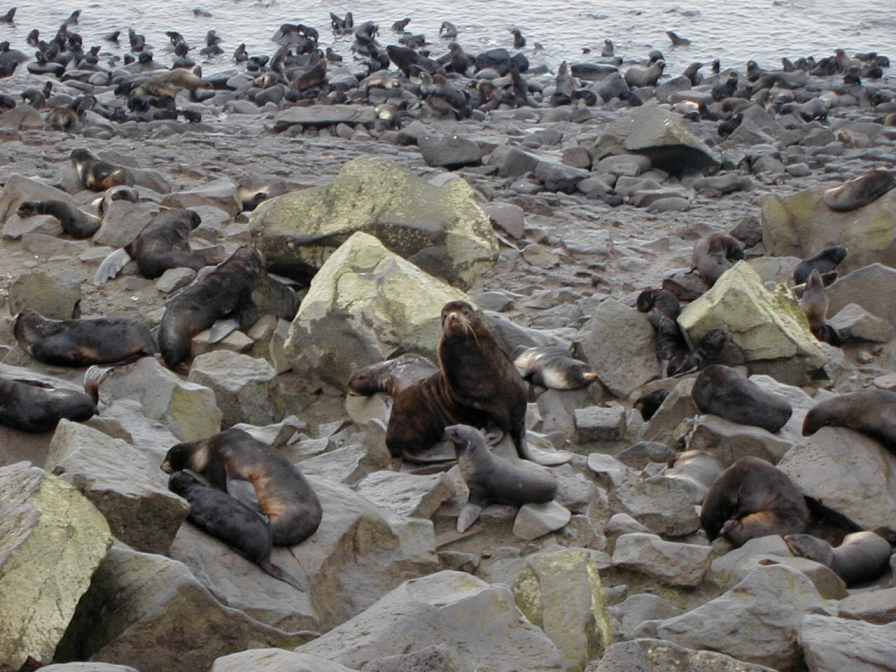An Island Getaway in Alaska
- Sandy Harbanuk
- Jul 3, 2022
- 4 min read

The plane lifted off from Anchorage, Alaska, on a stunningly beautiful May morning for an unusually placid flight to St Paul Island, 750 air miles and a four-hour flight to the west. The 40-square mile island in the Bering Sea is an oasis for breeding seabirds, seals, walruses, and sea lions, and home to 387 people.

I love remote places, especially islands; St. Paul was a dream destination where I was set to spend two working days. The only “hotel” is a dormitory-style wing attached to the airport terminal. Upon landing, I waited at the airline counter for my room key, and the agent asked, “Are you from Juneau?”
“Yes,” I said.
“Do you shop at Foodland?”
“Yes,” I said.
“I used to work there. I remember you.” she replied.
Alaska is big – 663,000 square miles. And Alaska is small – 1.2 people per square mile. I was 1,320 miles from home and the first person I met was an old acquaintance – I remembered her too.
My room was plain and spare, a bed, a desk and a chair, with a communal bathroom down the hall. Or, in this case, not so communal, since I was the only guest. St. Paul gets a small amount of summer tourism, groups that come in for bird and sea mammal watching. Rural communities rarely have hotels or restaurants, and I was five lonely miles from town and the only grocery store. There was also a communal kitchen and I’d brought my own food.
The remoteness turned creepy after I had the whole airport to myself. The bottom of the bathroom door was missing, so the lock was pointless. The lounge housed perhaps the first artificially intelligent television - the set was sometimes off, sometimes on, and I couldn’t change the channel. The first night, I sat up watching the tundra in the long daylight, two windmills cartwheeling outside my window, and fat wet snow flurries sailing sideways in the gloom of the wee hours.
St. Paul’s remoteness and wildlife weren’t the only appeal for me. The island was one of the last two respites for woolly mammoths, and, although it’s been 6,000 years since the last one took a lonely stroll there, it was possible to imagine one or a herd on the treeless straw-colored hills. St. Paul was once a low hill in Beringia, isolated as the sea rose at the end of the last Ice Age. Maybe one or two mammoths were still hiding out there?
I needed to get across a few of those gentle rises to do the work I’d come for. There was no cell phone service, but there was a phone in the deserted airport terminal (no flight that day). Someone had posted taxi numbers with a marker on the wall. I called the first, which was no longer in service. On the second call, I told the man who answered that I needed a cab from the airport to town. He said, “Well, my cab is at the airport, that’s where it broke down.” He gave me the number of a guy whom he said would give me a ride if I called him.
One of the attractions of remote places is that you’re at the mercy of unknown circumstances. Maybe a five-mile walk in unrelenting wind. Maybe keeping an eye out from the shower curtain in case a psychopath crawled under the broken bathroom door. Maybe the last woolly mammoth, searching for a bale of hay. I love maybes.
The cab driver’s friend became my new friend. I sadly don’t recall his name, but he eventually collected me and transported me four times during my stay, and we meandered and picked up and dropped off other friends. I was a mite early for the wildlife viewing (when there would have been much to see, but no hotel room.) In my free time, I explored the steep streets above the waterfront, and visited the lovely Russian Orthodox church. It was too windy for people to linger outside, but I got to chat with several people in the grocery store, where the manager was looking forward to a transfer to Southeast Alaska. He was originally from Western Washington, and was craving trees.

During my rides in the non-taxi, the word “swept” kept coming to mind. The open landscape is windswept, the low grass looks actually swept – it grows at an angle. A warming climate swept woolly mammoths off the evolutionary path.
You can’t catch a taxi to a better evolution. But you can catch a plane to a lot of maybes.
*Photo Credit: Department of Commerce, Community and Economic Development; Division of Community and Regional Affairs’ Community Photo Library

Sandy Harbanuk has spent ten years working for a social services program that takes her to remote corners of Alaska. Sandy lives and writes in Juneau, Alaska, with her mate Blueberry (a Common raven), two dogs, and a cat.
Follow Sandy's travels and upcoming book releases on her soon to be published blog: https://www.sandyharbanuk.com/

Comments